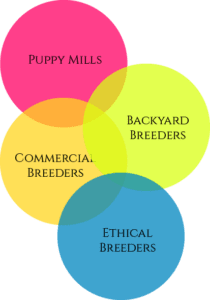-
Understanding the unique needs of American Satin Guinea Pigs is crucial for responsible pet ownership.
-
Adopting from reputable sources ensures the well-being of guinea pigs and supports ethical breeding practices.
-
Initial costs for adopting an American Satin Guinea Pig can range from $20 to $40, with additional setup costs.
-
Distinguishing between American and American Satin Guinea Pigs requires knowledge of physical traits and genetics.
-
Recognizing a Satin Guinea Pig involves looking for a distinct sheen on the coat, which is a sign of the satin gene.
Discovering the Lustrous American Satin Guinea Pig
When it comes to adopting a guinea pig, the American Satin breed stands out with its glossy, eye-catching coat. As someone considering bringing one of these adorable creatures into your home, it’s important to understand what sets them apart from their non-satin counterparts. Most importantly, adopting an American Satin Guinea Pig comes with the responsibility of understanding their specific needs and ensuring their long-term health and happiness.

“American Satin Guinea Pigs …” from guineadad.com and used with no modifications.
Physical Characteristics and Unique Traits
American Satin Guinea Pigs boast a distinctive sheen to their fur, thanks to a genetic trait that results in hollow hair shafts. This sheen is particularly noticeable in sunlight, giving their coat a shimmering appearance. Besides that, they share similar physical characteristics with the standard American Guinea Pig, including a robust body, a short, smooth coat, and a friendly disposition.
-
Shiny, satin-like sheen on the coat
-
Robust body shape
-
Short, smooth coat texture
-
Sociable and friendly nature
While their lustrous fur might be the first thing to catch your eye, it’s their sweet, outgoing nature that often captures hearts. Therefore, if you’re looking for a pet that’s both beautiful and affectionate, an American Satin Guinea Pig might just be the perfect match.
Option A. There is no relevant link to include in the content below.
Significance of the Satin Gene
The satin gene is responsible for the unique coat texture of American Satin Guinea Pigs. However, this gene can also be linked to certain health issues, such as osteodystrophy, which can affect their quality of life. Because of this, responsible breeding and care are paramount. Prospective owners need to be prepared for potential health monitoring and veterinary care that may be required to keep these guinea pigs healthy.
It’s crucial to be aware of the satin gene’s implications before deciding to adopt. By doing so, you’re not only ensuring that you’re ready for the commitment, but you’re also helping to discourage the breeding of animals that may suffer from preventable genetic conditions.
The Adoption Process Step by Step
Adopting an American Satin Guinea Pig is a rewarding experience, but it’s important to follow a few key steps to ensure you’re making the right decision for both you and your new pet. First, research and identify reputable rescue organizations or breeders. These groups should prioritize the welfare of their guinea pigs and be knowledgeable about the satin gene and its implications. For more information on adopting small pets, consider reading how to adopt rescue dogs, cats, rabbits, which can provide valuable insights into the adoption process.
Once you’ve found a trustworthy source, reach out and express your interest in adoption. Be prepared to answer questions about your living situation, experience with pets, and how you plan to care for your guinea pig. Responsible rescues will want to ensure their animals are going to a good home. If all goes well, you’ll likely be asked to fill out an application, and if approved, you can arrange a time to meet potential guinea pig candidates.
Cost Insights for Prospective Guinea Pig Parents
Adopting an American Satin Guinea Pig is not just a matter of paying the adoption fee; there are several costs associated with setting up and maintaining a healthy environment for your new pet. Let’s break down these expenses to help you budget accordingly.
Initial Adoption Fees and Setup Costs
Adoption fees can vary but typically range from $20 to $40. This fee often contributes to the rescue’s operational costs and the care of the guinea pigs. However, the initial setup for your guinea pig’s home will be a separate cost. Here’s what you’ll need:
-
A spacious cage: $50-$100
-
Bedding: $10-$30 per month
-
Hideouts and toys: $20-$50
-
Food bowls and water bottles: $10-$20
-
High-quality guinea pig pellets and hay: $20-$30 per month
Therefore, the initial setup for an American Satin Guinea Pig can range from $110 to $230, not including the adoption fee. Remember, a comfortable and enriching environment is key to your guinea pig’s well-being.
Ongoing Care Expenses
After the initial setup, there are ongoing costs to consider for the care of your American Satin Guinea Pig. These include:
-
Regular veterinary check-ups: $50-$100 per visit
-
Continuous supply of fresh vegetables: $20-$40 per month
-
Replacement bedding: $10-$30 per month
-
Hay and pellets: $20-$30 per month
Besides these, unexpected medical expenses can arise, especially considering the potential health issues associated with the satin gene. It’s wise to set aside an emergency fund for such instances.
Comparing American Guinea Pigs with Their Satin Cousins
At first glance, American and American Satin Guinea Pigs may seem similar, but there are key differences to be aware of. While both are beloved for their docile nature and suitability as family pets, the American Satin’s glossy coat sets it apart visually and genetically.
Visual Distinctions and Breed Standards
The American Guinea Pig has a short, smooth coat with no sheen, while the American Satin has a coat that glistens, especially in natural light. Breed standards for the American Satin also require a fine, dense coat that reflects light due to its unique hair structure.
|
American Guinea Pig |
American Satin Guinea Pig |
|---|---|
|
Short, smooth coat with no sheen |
Glossy coat with a satin-like sheen |
|
Widely available and less prone to genetic issues |
Less common and may have health concerns related to the satin gene |
Health and Longevity Considerations
While American Guinea Pigs are generally hardy, American Satin Guinea Pigs may be susceptible to health issues due to the satin gene, such as bone weakness or dental problems. Regular veterinary care and a diet rich in vitamin C are essential for both breeds, but owners of American Satin Guinea Pigs should be particularly vigilant for signs of health problems.
With proper care, both breeds can live happy lives of around 5 to 7 years. However, the potential health risks associated with the satin gene mean that American Satin Guinea Pig owners should be prepared for more frequent vet visits and possible additional care requirements.
Identifying a True American Satin
If you’ve set your heart on adopting an American Satin Guinea Pig, it’s important to know how to identify one correctly. This will ensure you’re getting the pet you desire and that you’re prepared for the specific care they require.
Spotting the Shine: What to Look For
A true American Satin Guinea Pig has a distinct shine to its coat, which is most apparent in natural light. The fur should glisten, almost as if it’s been polished, and this effect is due to the satin gene which gives the hair shafts a hollow structure. This trait is not just superficial; it’s a genetic difference that sets the American Satin apart.
When you’re meeting potential guinea pigs to adopt, observe their coat under various lighting conditions. A Satin’s coat will consistently have that unique sheen, distinguishing it from the regular, non-satin coat of other guinea pigs.
Common Misconceptions and Clearing Confusion
Some may confuse a well-groomed, healthy coat with the satin sheen. While a shiny coat can be a sign of good health in non-satin guinea pigs, the satin sheen is different—it has a more metallic and reflective quality. If you’re ever in doubt, a knowledgeable breeder or vet can help you determine if a guinea pig is a true American Satin.
Remember, while the satin trait is visually appealing, it comes with the responsibility of extra care due to the associated health risks. Choosing to adopt an American Satin Guinea Pig means committing to providing the special attention and veterinary care they may need.
Frequently Asked Questions (FAQ)
Are American Satin Guinea Pigs Good for First-Time Owners?
While American Satin Guinea Pigs are charming and can make wonderful pets, they may not be the best choice for first-time owners due to their special care requirements. The satin gene can predispose these guinea pigs to health issues that require vigilant care and potentially higher veterinary costs. First-time owners should be prepared for the additional responsibilities that come with owning an American Satin Guinea Pig, such as regular health checks and a keen eye for any signs of illness.
What Makes the ‘Satin’ Trait Special Among Guinea Pigs?
The ‘satin’ trait in guinea pigs is a genetic mutation that results in a glossy, reflective quality to the coat. This is due to the structure of the hair shafts, which are hollow, allowing light to reflect off them more intensely than the solid hair shafts of non-satin guinea pigs. It’s this unique genetic trait that gives the American Satin Guinea Pig its name and lustrous appearance.
How Can I Tell if My Guinea Pig’s Fur is Satin or Simply Shiny?
To determine if your guinea pig’s fur is satin or simply shiny, look for a consistent, metallic-like sheen that persists in different lighting conditions. Satin fur will almost seem to glow, whereas a healthy, shiny coat on a non-satin guinea pig will not have the same reflective quality. The satin sheen is particularly noticeable on the nose, feet, and across the body when viewed in natural light.
What Are the Long-Term Health Implications for Satin Guinea Pigs?
The satin gene is associated with a condition known as ‘satin syndrome,’ which can lead to various health issues, including bone density problems and dental issues. Long-term, this means that American Satin Guinea Pigs may require more frequent veterinary visits and specialized care to manage these conditions. Owners should be prepared for the possibility of ongoing medical treatment and the associated costs.
Can American Satin Guinea Pigs Be Shown in Competitions?
Yes, American Satin Guinea Pigs can be shown in competitions, and they have their own breed standards within certain organizations. However, it’s important to note that due to the potential health issues associated with the satin gene, some organizations and breeders are reconsidering the ethics of breeding and showing satin varieties. Always check with the specific competition’s rules and guidelines regarding satin guinea pigs before entering.
Adopting an American Satin Guinea Pig is a commitment to providing a special animal with the care and attention it deserves. With their striking appearance and affectionate personalities, they can make wonderful pets for those who are prepared for the responsibility. By understanding the unique needs of these guinea pigs, adopting from reputable sources, and being prepared for the costs and care involved, you can ensure a happy and healthy life for your new furry friend.


